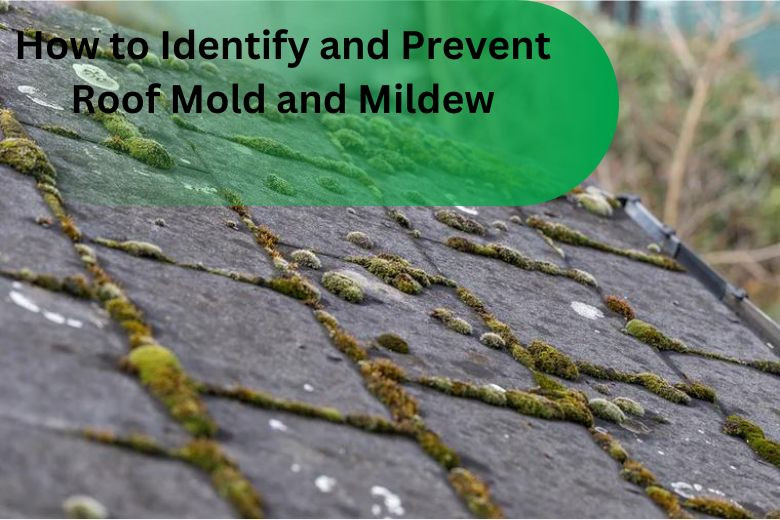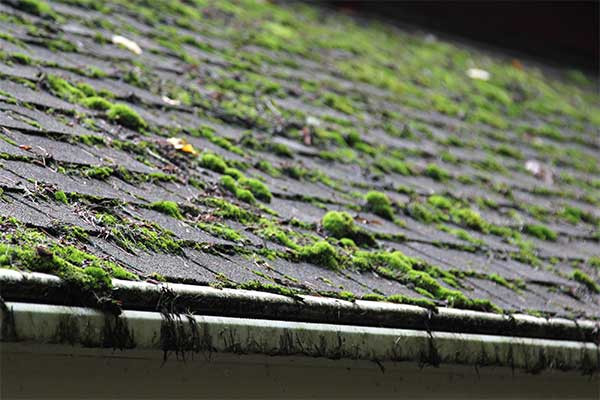How to Identify and Prevent Roof Mold and Mildew
Posted on September 30, 2024 by Admin

Most importantly, with mold and mildew being a part of this list of common issues with most roofs, the damage can be deep if not checked. They thrive in damp conditions and can further worsen respiratory problems or even cause structural irreparable damage to your house. Knowing how to identify and prevent roof mold is very crucial to a healthy and safe living environment. Here's a comprehensive guide on how to easily identify and prevent roof mold and mildew effectively.
Recognizing Roof Mold and Mildew
1. Visual Indicators
The most common and apparent indicators of mold and mildew on roofs would be dark, discolored spots or patches on the roofing. They come in black, green, or brown stains and, in general, most often come about in shaded areas where moisture is collected.
2. Musty Odor
Mold and mildew, when growing, produce a particularly musty smell. If you catch this smell inside your roof or attic area, then a likely case is that the house is growing mold.
3. Health symptoms
Some of the other symptoms around your home are invigorated by mold exposure and this includes problems with respiration, allergies, and other health-related issues. Thus, if your household happens to have one or several members showing some symptoms related to health challenges, then that may relate to the mold within your home.
4. Roof deterioration
Mold is quite notorious for sending shingles to an early grave, especially with increasing wear. Observe the signs, such as curling shingles, cracked shingles, or any other damages, that indicate mushroom growth inside.
Prevent Mold and Mildew on Roofs
1. Proper Ventilation
The best defense against mold is good ventilation. Assure proper ventilation of the attic space so that moisture will move out and not become trapped inside. Install ridge vents, soffit vents, or attic fans to allow better air movement.
2. Clean Your Roof
Clean the roof regularly to remove leaves, branches, or any other form of debris that could trap moisture. Moisture trapped then leads to the growth and multiplication of the mold spores.
3. Immediate repair of leaks
All leaks that are noted to be on the roof should be immediately repaired. Moldy growth is likely to have been very fast after the water invasion; therefore, repairing the leakage as the very first step towards preventing the accumulation of moisture.
4. Trimming Overhanging Branches
Trees that lean over your roof allow leaves and debris to fall on your roof, trap moisture, and encourage mold growth. Trimming the branches back will allow your roof to receive sunlight and will reduce the amount of debris.
5. Moisture Barriers
It might be a smart idea to have some moisture barriers placed below your roof shingles. These work to keep water from penetrating through to your roof and causing mold.
6. Mold-Resistant Materials
Use mold-resistant roofing while repairing or replacing your roofing. Such materials may help to stop the growth of mold.
7. Regular Inspections
Regularly inspect your roof, immediately after heavy rainfall or storms. Look out for signs of mold and mildew and act promptly on all issues found.
Conclusion
Knowing how to recognize and avoid roof mold is very important to your house and your health. Consequently, routine and timely repairs can prevent molds from getting onto your roofing. Proper ventilation is central in preventing molds' growth on a roof; thus, maintaining the cleanliness of the roof, repairing roof leaks, and applying materials with a content of mildew resistance will help in preventing mold and mildew from tearing your roof and house apart.All this will help in the preservation of the integrity of your roofing, thus helping to maintain a cleaner, healthier living environment. Just remember that the best defense against molds and mildew is early detection and prevention; hence you should always be vigilant and proactive in terms of roofing.
Also Read :
The Benefits of Roof Inspections Before Buying a Home
How to Choose the Best Roofing Contractor
The Importance of Sump Pumps in Flood-Prone Areas
How to Install a Tankless Water Heater: Pros and Cons
The Benefits of a Home Plumbing Maintenance Plan
Roof Safety Tips for Homeowners
The Impact of Algae and Moss on Your Roof
How to Deal with Roof Leaks During a Storm
How to Create an Electrical Maintenance Plan for Your Home
Faqs
-
1. How will you identify the common signs of roof mold?
Common indications of roof mold include dark stains or discoloration on the roofing; a musty odor in the attic or nearby to the roof area; health symptoms that are typical, such as respiratory problems or allergy issues. You could also have roof deterioration, for example, curling or cracked shingles.
-
2. How does proper ventilation help prevent roof mold?
Proper ventilation will prevent roof mold by simply allowing moisture to leave the attic area; good airflow reduces the amount of humidity inside the attic. When there is a lot of moisture, it creates the perfect breeding ground for mold and mildew. Installing ridge vents, soffit vents, or attic fans will increase ventilation tremendously.
-
3. What should I do if I find a leak in my roof?
If leakage is noted in the roof, it should be repaired right away to prevent water intrusion, as this often leads to mold within just a few days. If possible, fix leaks as soon as you become aware of them to avoid moisture buildup that causes mold damage to your roof and home.
-
4. How often should I inspect my roof for mold?
It's a good idea to inspect your roof regularly for mold. Particularly after heavy rainfall or storms, you can detect and deal with mold issues before they cause significant damage by making an inspection at least twice a year and more frequently in wet seasons.
-
5. Are some materials conducive to preventing roof mold?
Yes, using mold-resistant materials will help to prevent roof mold. Consider treated wood or shingles with mold inhibitors in case you need to repair or replace your roof. These are materials that don't allow mold growth and hence give protection to your roof.
Recent Post
- Top Plumbing Service Providers in Arizona, USA
- Top 10 Electrician Service Providers in Alabama, USA
- Top 20 Roof Repair Service Providers in Alabama, USA
- The Role of Roof Insulation in Energy Efficiency: Tips and Tricks
- Understanding Roof Damage from Wildlife and How to Prevent It
- How to Choose the Best Roofing Contractor for Emergency Repairs
- Roofing Maintenance for Historic Homes: Preserving Architectural Integrity
- The Importance of Proper Attic Ventilation for Roof Health
- How to Identify and Prevent Roof Mold and Mildew
- The Best Practices for Removing Snow from Your Roof